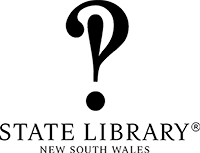FL14369345
Facsimile
Transcription
selling four acres of land in Sydney in an area bounded by George, Market and York Streets.142
While they were living at O'Connell Plains a frightening episode was experienced when a
tribe of Aborigines, desperate to escape from a violent attack by another tribe led by an Aboriginal
called Saturday, rushed for safety to the Hassall home and crowded into all the rooms and the loft.
When Saturday and his group did appear, Thomas Hassall stepped from his house with a gun and
said he would shoot any who came forward. He told them that if they settled their differences he
would shoot a bullock for them for a feast. This offer was accepted and the members of the warring
tribes enjoyed a merry feast together.143
At Lampeter Thomas Hassall built a small chapel which he called Salem Chapel and held
regular services there. This chapel at O'Connell Plains remained a centre of worship for many years
and in 1835, presumably to regularise its use as such, Bishop Broughton announced that he had set
aside £80 for O'Connell Plains Chapel on ''condition that Mr Hassall will secure its being
permanently set apart as a place of worship''.144
In March 1827 he was appointed to the Cowpastures, the new parish of Narellan which he
described as ''Australia beyond Liverpool''. There was no church initially but Hassall used a small
schoolhouse there as a preaching station. At first he stayed with his brother, Samuel Otoo Hassall,
at Macquarie Grove while he looked for a suitable property. He purchased a large 1100 acre
Denbigh estate at Cobbity from Charles Hook (a former partner of Robert Campbell at Syndey
Cove) for £1500. Both Charles Hook and Robert Campbell were friends of Rowland Hassall who
with them supported Bligh. When Robert Campbell accompanied Bligh to England, Charles Hook
was left to manage their joint enterprise but the business collapsed in 1816 because of antagonism
generated by his support of Bligh. This antagonism also resulted in Charles Hook being imprisoned
for one month and fined for having distributed Bligh's proclamation declaring New South Wales
in a state of mutiny. After the failure of the business Hook retired to his land grant in the district
of Cook and built the house which Thomas Hassall bought.145
This place, which was named Denbigh, became Hassall's headquarters. In 1828 when his
clerical salary was £225, on his 150 acre grant called Pomare Grove, he built Heber Chapel, named
after Reginald Heber, Bishop of Calcutta who was responsible for the Australian church until 1836
when William Grant Broughton became the Bishop of Australia. The chapel was built of bricks and
timber which Thomas Hassall had brought with him to build his house and which were left over
after he had built his extensions to the house already in existence at Denbigh. This chapel,
142 Buchanan, Helen, The First Hundred Years of St. Thomas's Church, O'Connell, p.3.
143 Stapleton, Eugenie, ''Ann (Marsden) Hassall and 'The Galloping Parson''' in Spotlight on History, No.4,
St Mary's Historical Society, p.19.
144 Barker, Theo, A History of Bathurst, Crawford House Press, Bathurst, 1992 and Bishop Broughton and
the Bathurst Plains, The Broughton Centenary 1836-1936, Cathedral Buildings, Bathurst 1936.
145 Steven, Margaret, ''Hook, Charles (1762?-1826)'', Australian Dictionary of Biography, Vol1, 1788-
1850, p.551.
50
Notes and Questions
Nobody has written a note for this page yet
Please sign in to write a note for this page


